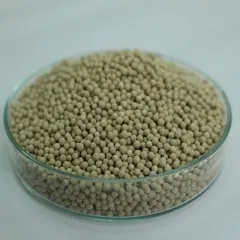- Home
- Products
- Elementary
- Boride Powder
- 3D Printing Powder
- Sulfide Powder
- Oxide Powder
- Carbide powder
- Nitride Powder
- Silicide Powder
- Hydride Powder
- Telluride Powder
- Selenide Powder
- Stearic Acid Series
- Phosphide Powder
- Nanoparticles
- Metal Alloy
- MAX Phase
- Lithium Battery Anode
- Surfactant
- Molecular sieves
- Concrete Admixtures
- Cladding of metals
- News
- Blog
- Contact
- About
Molecular Sieves 3A
3A molecular sieve is the type A sialic acids potassium salt. 3A molecular Sieve can be used to adsorb molecular that have a diameter of no more than 3A.
About Molecular Sieves 3A:
Crystal structure of molecular sieve 3A
The crystal structure of molecular sieve 3A is a three-dimensional skeleton composed of silicon, aluminum, sodium, and other elements connected by covalent bonds. This structure makes molecular sieve 3A highly ordered and stable and can effectively separate and adsorb different molecules.
Adsorption properties of molecular sieve 3A
Molecular sieve 3A has strong adsorption properties and can effectively adsorb and separate different molecules. Its adsorption properties mainly depend on the size and shape of the pore size in its crystal structure, as well as the polarity and size of the molecules.
Selectivity of molecular sieve 3A
Molecular sieve 3A has a high selectivity; that is, its adsorption capacity has a significant difference for different molecules. This selectivity makes molecular sieve 3A widely used in many fields, such as gas separation, liquid separation, catalyst carrier, etc.
Stability of molecular sieve 3A
Molecular sieve 3A has high stability and can keep its structure and properties unchanged under extreme conditions such as high temperature, high pressure, strong acid, and strong base. This stability makes molecular sieve 3A widely used in many fields, such as chemical, petrochemical, and environmental protection.
Regeneration of molecular sieve 3A
Molecular sieve 3A has good regeneration; that is, it can be regenerated by a particular method after use so that it can be reused. This regeneration makes molecular sieve 3A widely used in many fields, such as catalyst support, gas separation, etc.

Applications of Molecular Sieves 3A:
Gas separation
Molecular sieve 3A has very high adsorption capacity and selectivity, which can effectively separate and purify different gases. In industrial production, many gas mixtures must be separated and purified before they can be used, and molecular sieve 3A can be used as an efficient and environmentally friendly separation technology for gas separation and purification.
Liquid separation
Molecular sieve 3A can be used for liquid separation and purification. By selecting the appropriate molecular sieve 3A model and process conditions, impurities and odors in the liquid can be effectively removed, and the purity and quality of the liquid can be improved.
Catalyst support
Molecular sieve 3A can be used as a catalyst carrier to improve the activity and selectivity of the catalyst. By loading the catalyst on molecular sieve 3A, the dispersion and stability of the catalyst can be improved, and the catalytic efficiency of the catalyst can be increased.
Environmental protection
Molecular sieve 3A can be used in environmental protection, such as removing harmful gases and pollutants in the air. By filling molecular sieve 3A into the filter, harmful substances in the air can be effectively removed, and air quality can be improved.
Chemical industry
Molecular sieve 3A also has a wide range of chemical industry applications, such as fine chemicals, drug intermediates, etc. By using molecular sieve 3A as a catalyst or adsorbent, the selectivity and efficiency of the chemical reaction can be improved, and the quality and yield of the product can be increased.
Production Method of Molecular Sieves 3A:
Batching preparation
First, raw materials such as sodium silicate, sodium hydroxide, and aluminum sulfate must be mixed in a particular proportion to prepare an ingredient solution. This solution contains all the ingredients needed to synthesize molecular sieve 3A.
Crystallization reaction
The mixture solution is a crystallization reaction; under specific temperature and pressure conditions, silicon, aluminum, sodium, and other elements in the solution will undergo chemical reactions to generate molecular sieve 3A crystals. This reaction requires temperature, pressure, and reaction time control to ensure the crystal quality and purity of the molecular sieve 3A generated.
Washing and drying
After the crystallization reaction, the resulting crystals must be washed and dried. Washing removes impurities and residues on the crystal surface to ensure purity; drying separates the crystal from the solution for subsequent processing and treatment.
Screening and packaging
The dried crystals need to be sieved to remove crystals of different sizes to ensure the quality and specifications of the product. Finally, the sieved crystals are packaged for transportation and use.
Packing & Shipping of
3A:
25kg/carton lined in PE bag
55 gallon sealed steel drum
Customers can request customized packaging.
Molecular Sieves 3A Properties | |
| Other Titles | N/A |
| No. | N/A |
| Combination Formula | N/A |
| Molecular Weight | N/A |
| Appearance | NA |
| Melting Point | N/A |
| Boiling Point | N/A |
| Density | N/A |
| Solubility of H2O | N/A |
| Exact | N/A |
Molecular Sieves 3A Health & Safety Information | |
| Signal word | N/A |
| Hazard Statements | N/A |
| Hazard Codes | N/A |
| Risk Codes | N/A |
| Safety statements | N/A |
| Transport Information | N/A |
Inquiry us
PREVIOUS Molecular sieves
High Efficiency Oxygen Molecular Sieve OX480
NEXT Molecular sieves